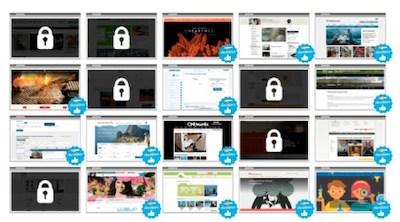Advertisers are more concerned than ever about brand safety, and one of the primary ways they’re trying to keep their ads from appearing in unfriendly places is through whitelisting.
Programmatic advertising (automated buying and selling of online advertising) already offers marketers an effective and efficient way to target the right audiences for ad campaigns. Using whitelists and blacklists, also know as block lists, is a way to refine targeting to truly narrow down who marketers are reaching.
Brands know ads will appear in specified, designated places and nowhere else. When marketers know ads are reaching the most qualified, specific audiences, they know they’re getting a better return on their investment.
In contrast, blacklists work in the reverse. Instead of specifying where ads should go, blacklists work to explain where they shouldn’t go and brands can ensure that ads run anywhere but where the list has indicated.
With a whitelist, advertisers can specify which sites and what ad placements they want their advertisements to run on.
When used in conjunction with each other, both whitelists and blacklists can really help marketers to zero in on just the right audience. While they’re not typically applied together, these lists can be used to really tighten the scope of the audience if there’s a specific goal in mind.
For example, if a brand wants to run a one-day video promotion for a sale, they’ll want to zero in on what whitelists and blacklists can offer them. That brand could use reporting to optimize for maximum performance by creating a blacklist for domains with low video completion rates and whitelist line items of domains with high video completion rates.
Whitelists and blacklists have slightly different meanings depending on whether you are an advertiser or a publisher. For advertisers, a blacklist is simply a list that identifies the sites on which an advertiser does not want its advertising to appear, while a whitelist identifies only the sites on which an advertiser wants its advertising to appear. You wouldn’t use both on the same campaign.
For publishers, similar reasoning applies but from the opposite side of the process. Publishers have whitelists designating which advertisers they will accept on their site and blacklists of advertisers that are blocked. The difference between the two is just the execution, block or allow. They achieve the same goal of regulating which advertisers are allowed onto the publisher’s site. The level of blocking can vary, from specific brands or landing page URLs to full advertiser categories.
Advertisers and publishers employ white and blacklists in a variety of ways and for their own distinct purposes. When used properly, white and blacklists can yield positive outcomes, but just as easily, improper use can produce negative results.
For publishers, the use of white and blacklists are fueled by two main reasons: brand integrity and preventing sales channel conflict.


Maintaining brand integrity is the most common and obvious use. When a publisher restricts ads on its site, it protects the user experience.
To maximize the benefit of white and blacklists, it’s typical for publishers to find a sensible balance. Legitimate reasons exist to take advantage of whitelists and blacklists, particularly because they can have a significant effect on a publisher’s revenue potential.
The ideal state is to block as few advertisers as possible while maintaining brand integrity and leaving room for direct sales.
Publishers should make an informed, data-driven choice to find the right mix with a minimal number of blocked advertisers while still being mindful of user experience.



